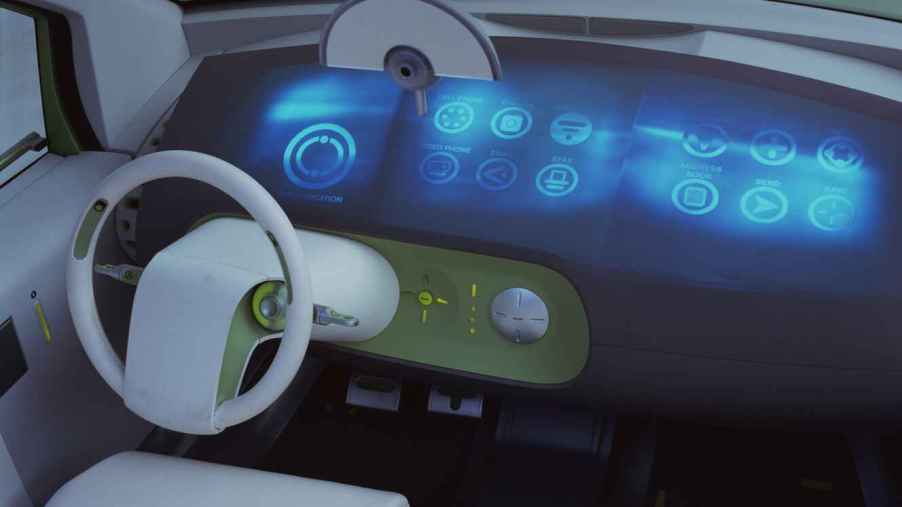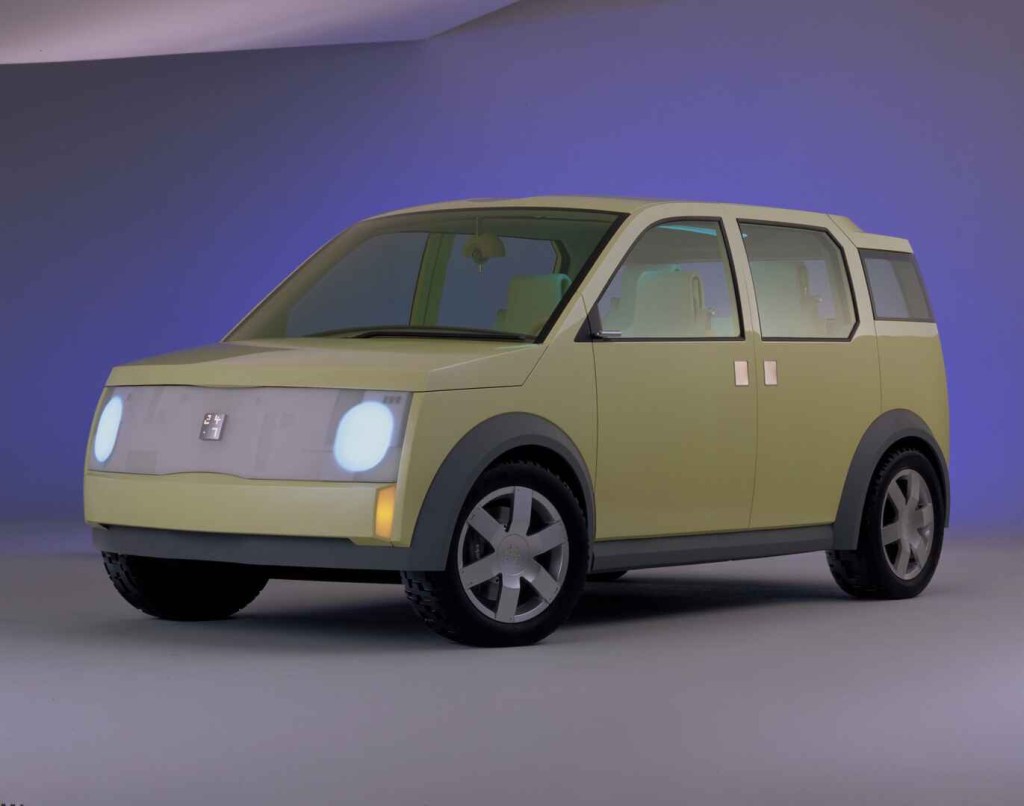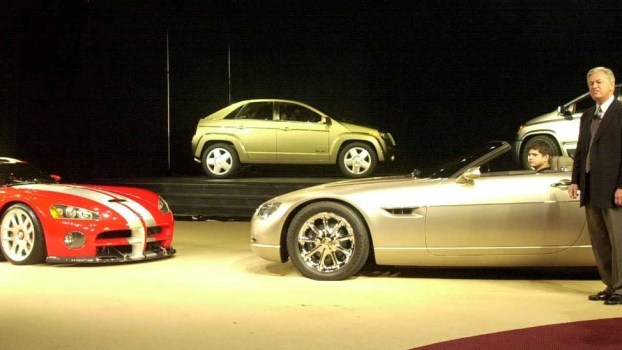
This Oddball Ford Concept Car Was Designed to Keep Us Boundlessly Plugged into the Matrix
The Y2K North American Auto Show in Detroit continues to delight me. The January 2000 event was stuffed with dozens of reveals and concepts predicting the future of automotive style and connectivity. Ford was no outlier in presenting a toaster-like vehicle lineup: the 24.7.

The Ford 24.7 concept came in three models: the wagon, the truck, and the coupe. The Jetson-like 24.7 features included blue LED touchscreens and streamlined seating. Ford used the 24.7 to show how folks might seamlessly plug into the digital world through their car. Dash screen prompts include “video phone,” “camera,” “email,” and even “eFax.” These suggest perhaps stronger social and work connectivity than we have even 20 years later.
Ford 24.7 tech meets indiscernible design






The head designer has explained that the three models were a “canvas.” As such, they didn’t consider current standards. “Information delivery” was at the forefront. He used Mac computers as an analogy, citing that Apple moved away from large grey boxes. This certainly paid off for Apple. It’s funny to me that these concept cars were all dull in color and terribly box-like. I’m getting Honda Element vibes (a model I love and have owned, but enjoyed for the actual utility than the tech).
To truly bring the living room to the 24.7, the coupe model touted a fold-down TV screen built into the hatch floor. The screen would face outward in such a way as to serve you, your family, and your friends the latest news, game, or blockbuster release.
While the interiors certainly look built for crash dummy testing, frame stability wasn’t a focus. None of the concepts seem to have b-pillars, the vertical frame bar between the front and rear passengers. The truck concept’s doors look to be made from the same material as the sunroof.
At the show, J. Mays, Ford’s VP of design, clarified that these prototypes were basically only meant to serve as carrying cases for connectivity concepts. Shew. Even decades later, without safe, reliable vehicle autonomy, we’ll just need to use our cars to mostly, well, drive.
Sources: MOTOR Magazine, Ford Heritage Vault.





